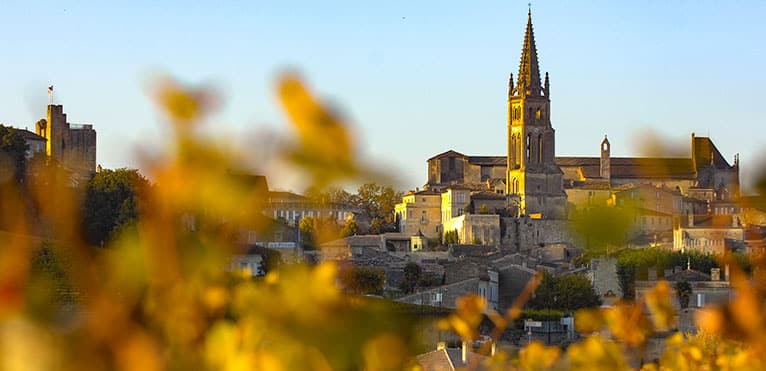
Contents
Côte-de-Bourg is a Bordeaux appellation for white and red wines, also known as Bourgeais or simply Bourg. The Bordeaux vineyards, from which he hails, are a historic and world-renowned wine-growing region.
Every year, some 5,983,000 hectolitres of the region’s 38 Appellations d’Origine Contrôlée (AOC) are produced. This quality makes it France’s leading vineyard in terms of volume. It covers an area of more than 117,200 hectares, giving it a great diversity of terroirs. Côte-de-Bourg was awarded the AOC label in 1936 and the AOP (Appellation d’Origine Protégée) label in 1941.
The Côte-de-Bourg appellation is little known
The history of the Côte-de-Bourg appellation is closely linked to that of its wine-growing region. Historians believe the region’s wine culture dates back to ancient times, when the Romans called it “Vitis Biturica”. This sector is fully integrated into the local and even international economy, thanks in particular to its strategic location close to the Atlantic coast, making it an ideal trading partner for the UK and Northern Europe.
Thanks to a long tradition of exports, Côte-de-Bourg has become an essential Bordeaux wine.
The Côte-de-Bourg AOC is based on a terroir of rich and varied soils.
Côte-de-Bourg is grown and vinified at low altitudes, rarely exceeding 100 meters, on pretty valleys and hillsides that slope down to the Dordogne, with soils of predominantly clay-limestone, gravel and sand. This mosaic of soils is highly conducive to good vine drainage. In fact, the porosity of the soil prevents water stagnation and provides the vines with mineral elements.
Climatic conditions in the Côte-de-Bourg plots are ideal. The climate is generally oceanic and temperate, typical of the Aquitaine region. The sunshine is excellent, heating the plots an average of 240 days a year.
Côte-de-Bourg and its duality
Côte-de-Bourg rouge is a blended wine, meaning that its charter allows for the use of several grape varieties in its production. In this case, the grape varieties used are Merlot, Cabernet Sauvignon, Malbec and Cabernet Franc.
To the eye, Côte-de-Bourg rouge reveals a red red deep rubye with purplish highlights for younger wines. On the nose, it reveals very gourmet aromas. It reveals fine, intense primary fruit notes black and red, especially with redcurrant and blackberry, see sometimes prunes. In addition secondary reveal themselves with a toasty side, a note of vanillae and of cocoa noteses. In the mouth, Côte-de-Bourg is a fairly dense wine. Its attack is supple and sa delicate but marked. It has lovely, round tannins and a long finish. full of endesse with grain. Nevertheless, the variation in terroirs can mean that some are more powerful than others. In general, we recommend keeping a bottle of Côte-de-Bourg red between 3 and 8 years.
Côte-de-Bourg blanc is a blended wine, meaning that its charter leaves open the possibility of using several specific grape varieties to produce it. The grape varieties used are Sauvignon Blanc, Colombard, Sémillon, Muscadelle and Sauvignon Gris.
To the eye, Côte-de-Bourg blanc reveals a pale yellow colour with very typical green highlights. Clear and brilliant, it is distinguished by its disc is thick. On the nose, it reveals an elegant bouquet marked by floral notes of acacia, mimosa and locust, hawthorn and broom. Secondary aromas are characterized by scents of grass and cut hay, and toasty notes if barrel-aged. in barrel. In general, we recommend keeping a bottle of Côte-de-Bourg blanc between 2 and 5 years.
Côte-de-Bourg and duck
Côte-de-Bourg is a dry still wine, whether red or white. Côte-de-Bourg red goes very well with duck. Pair it with pan-fried foie gras, grilled entrecôte, duck breast with peaches, or prime rib.
Côte-de-Bourg red is generally served at around 16°C.
Like most white wines, Côte-de-Bourg Blanc is a perfect match for iodized flavors, especially seafood and fish in sauce.
Côte-de-Bourg blanc is generally served at around 11°C.
2009, an unexpectedly exceptional year for Côte-de-Bourg
The years considered as exceptional vintages for Côte-de-Bourg are : 1945, 1947, 1949, 1962, 1975, 1986, 1988, 1989. It should also be noted that 2009 was an exceptional year.
2 outstanding Châteaux to discover in Côte-de-Bourg AOC
Château Roc de Campes
Château Roc de Campes is one of two Côtes de Bourg estates managed by the masterful hand of the renowned François Mitjaville.
This centuries-old estate boasts a hillside amphitheatre overlooking the river and a splendid 14th-century cellar. It’s just a few hundred meters from the fortified town of Bourg.
Château Falfas
The origins of the estate date back to the 14th century. It was then administered by the Seigneurs de Lansac, a family very close to the English crown. His wines were highly appreciated at court.
The estate’s 20 hectares are reserved for the Côte-de-Bourg appellation and stretch along the southern slopes. Today, the Cochran family owns this estate, which was converted to biodynamic viticulture in 1988.